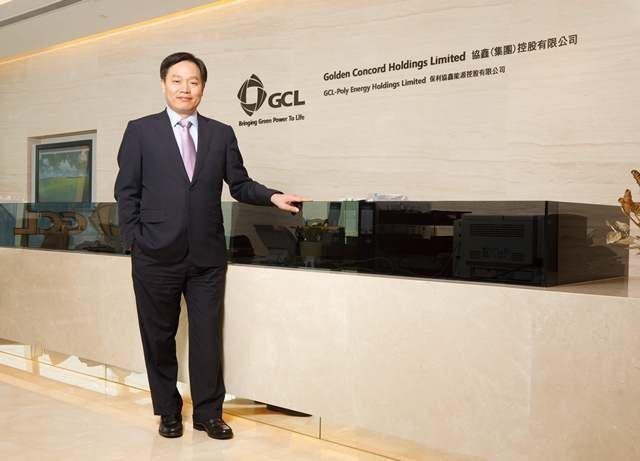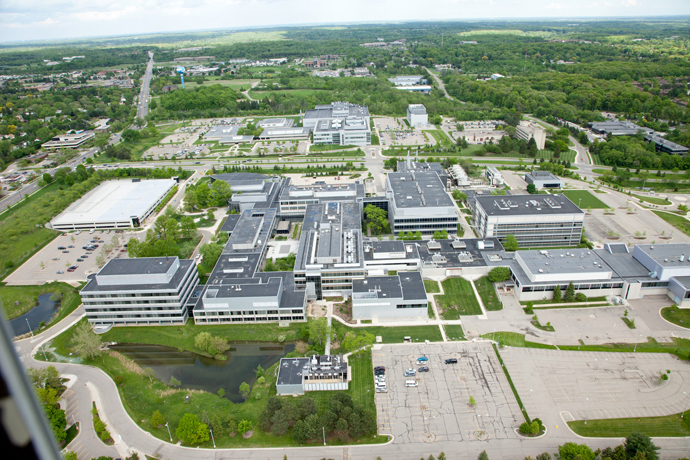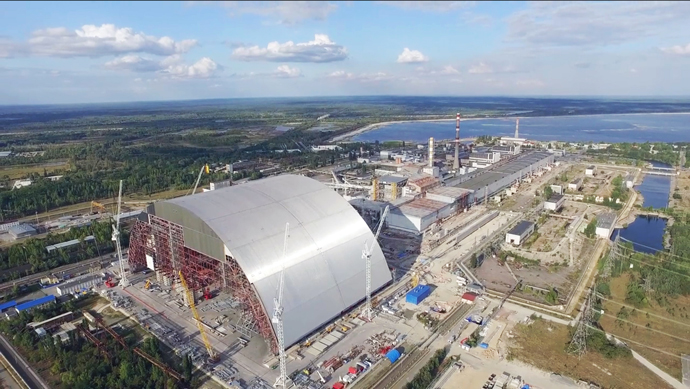Solar power champions like to say the sun belongs to everyone, and its rays fall everywhere for free. A new project demonstrates that everywhere even includes nuclear fallout exclusion zones.
It was nearly six years ago when we first encountered China’s Golden Concord Holdings Limited (GCL Group), whose GCL-Poly Energy Holdings had approved more than $2 billion worth of polysilicon and wafer facility investments in the People’s Republic of China. It was in the process of growing in its aim to become the world’s largest solar wafer producer, and was also growing its portfolio of company-operated solar power plants.
In late November, GCL System Integration Technology Co., Ltd. (GCL-SI), a subsidiary of GCL, announced cooperation with state-owned China National Complete Engineering Corporation (CCEC) in a major 1-gigawatt (GW) photovoltaic power plant project in the “exclusion zone” at Chernobyl. It comes 30 years after the explosion and meltdown that released lethal radiation and contaminated 30 sq. km. (11.5 sq. miles) with nuclear fallout. Radiation levels 500 times that of the Hiroshima atomic bombing site were measured.
The 1-GW power generation capacity of the new solar installation is equivalent to that of one of the four nuclear reactors formerly operational at the site.
GCL’s announcement followed an announcement by the Ukraine Ministry of Environment and Natural Resources in October that a PV power plant would be constructed at Chernobyl. “Its cheap land and abundant sunlight constitute a solid foundation for the project,” said Ostap Semerak, Ukraine’s minister of environment and natural resources. “In addition, the remaining electric transmission facilities are ready for reuse.”
The Ukraine government in 2010 instituted a plan that calls for all reactors at Chernobyl to be deactivated by 2025, with full dismantling of all reactors and clearing of the site by 2065. (You’re welcome, next generation.) Currently, a team led by French firm Novarka just completed a $1.6-billion shield — officially labeled with the Orwellian moniker “New Safe Confinement” — that had to be built at a distance from the still-dangerous reactor that exploded in 1986, then rolled on parallel tracks until it covered the complex.
World Domination?
GCL-SI expects to begin construction of the solar farm this year.
The company’s movement into Ukraine follows diplomatic visits to the country over the past year by Chinese government and industry leaders that were tied to agriculture and airport/airline projects connected to China’s “One Belt, One Road” program. Last March, Ukraine Prime Minister Arseniy Yatsenyuk expressed hopes that cooperation with China and its companies would extend to port expansion and redevelopment, logistics network improvement and grain storage and railroad reconstruction.
Last spring, a Ukraine government release stated that the costs related to dealing with the Chernobyl catastrophe have at times reached between 8 percent and 10 percent of the entire national budget. Through 2015, experts estimate total losses of around $180 billion.

In January 2016, the Ukraine government announced varying amounts of financial support for Chernobyl victims to compensate for the cost of vouchers for sanatoria and rehabilitation institutions, ranging from $191 for those with a disability related to the accident to $635 for those with resultant nervous system diseases. The English translation of the announcement stated, “Citizens will choose a health resort institution to which annual financial assistance will be transferred. However, if the described sums appear not enough to compensate for the cost of the voucher to undergo treatment in such an institution, victims can pay the difference themselves.”
Gee, thanks.
With global assets worth nearly USD16 billion, GCL achieved module shipment output of over 2 GW in 2015, and supplies 29 percent of the total wafer capacity yield worldwide, representing a 22.2 percent silicon market share. In December, GCL was ranked second in a “Global Top 500 New Energy Enterprises” ranking published by the National Energy Administration of China and English language Chinese newspaper People’s Daily, above companies such as GE and Panasonic. Global expansion is part of the company’s big plan.
“There will be remarkable social benefits and economical ones as we try to renovate the once damaged area with green and renewable energy,” said Shu Hua, chairman of GCL-SI, of the Chernobyl project. “We have been dedicated to providing integrated solar services and will take diverse approaches this year to drive penetration and achieve global presence. The Chernobyl project is also one of our key steps to approach abroad.”
One week after GCL’s announcement in November, Zhu Gongshan, chairman of GCL Group, was elected President of the second committee of the Global Solar Council (GSC), the world’s largest cooperation platform in the photovoltaics (PV) industry. In a speech on that occasion, Zhu suggested that GSC could integrate resources among different countries and districts by sharing successful operating experiences and business models between developed markets and emerging markets.
The company’s Southeast Asian growth vector is alive and well, including projects and partnerships in Thailand, Australia and, earlier this month, in Vietnam, where GCL made an investment in Vina Cell Technology Co., Ltd., a Vietnam-based solar cell manufacturer, in trade for up to 600 MW of production capacity. The company said its move was made to “strengthen its competitive edge and to be better poised for wider opportunities in the US and European markets.”
In October, said a company release, Zhu invited global industry leaders to join the International Forum on Energy Transition and took them to visit the “Future Energy Forum” built by GCL. “In the near future, we will seek to initiate more theme activities in Southeast Asia, Western Asia, Africa, and Latin America,” he said in November, “to support and promote photovoltaics’ development in those emerging markets.”


